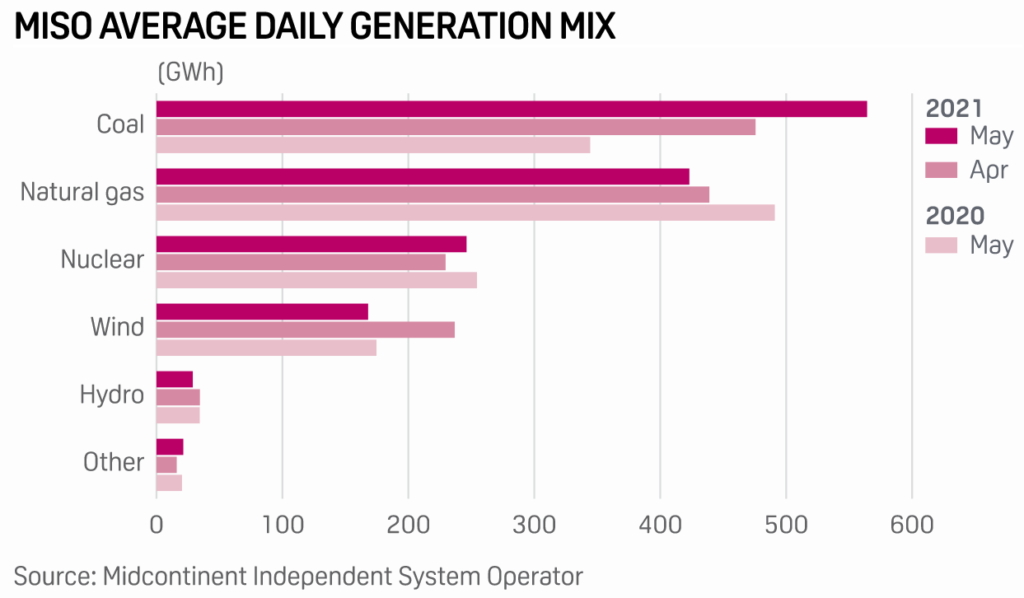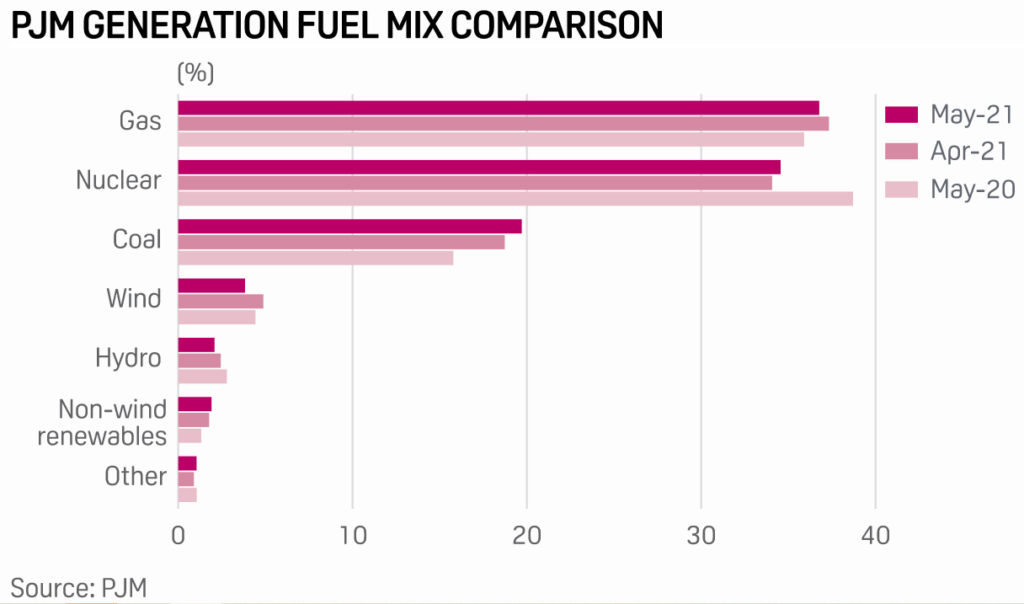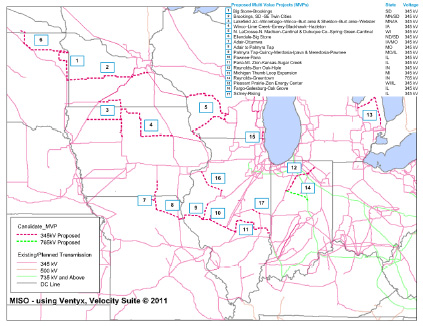Coal ramping UP! Xmsn shipping it OUT!
June 24th, 2021

From a post about 2,100 MW of new transmission:
Developers of 2,100 MW MISO-PJM transmission line choose engineering firm
Let’s think about this a bit. This is a MISO to PJM transmission project. Transmission serves what’s on the line. In MISO, (see above) it’s coal, followed by natural gas, both fossil fuel, and those two followed by nuclear, the most toxic, dangerous, and expensive generation.
Amid all the bluster about climate change, coal generation has ramped up over the last year. Factor to consider — in May of 2020, not much was happening anywhere, so increased generation from then seems likely, to be fair, we need comparison to 2019, BUT, clearly the coal plants are NOT being shut down. And with our transmission build-out over the last 20 years, they can ship and sell it anywhere. What is it going to take to get this fossil generation shut down?
And look at PJM’s mix:

And again, much of the coal in PJM was smaller plants, except for that monster in West Virginia, smaller plants that were too expensive to run, not at all marketable, so they were shut down. MISO is another story, with large coal plants, transmission to get it from any Point A to Point B, and probably the last coal plant to be built, Warren Buffet’s 700MW MEC coal plant, served by the transmission build-out through southern Minnesota and across Iowa.


Why would we need more transmission? WE don’t. THEY DO, it’s a major part of their new business plan. As Lisa Agrimonti so aptly stated in a recent Grid North Partners Conference, it used to be about NERC reliability criteria, “a pretty simple story,” but now, “we need this transmission line to deliver energy more broadly” and it’s a more complicated need story.
Yeah, that’s what they’re wanting to do, for sure!

With the change from reliability to the general “we want it” corporate greed = need, how can a project be challenged?
E.O. 13920 SECURING THE UNITED STATES BULK-POWER SYSTEM
May 1st, 2020

“Free marketers,” duck and cover. And utilities, contractors, get ready… Just in, for Public Inspection, will be released Monday:
The gist of it is that utility infrastructure and equipment should not be coming in from other countries, particularly “adversaries.” Threat? What threat?
From the E.O., p. 2-3:
WHAT?!?!
PEPCO is falling down on the job
December 12th, 2010
Nearly two years ago, I attended a hearing for the Delmarva Power Integrated Resource Plan, which was the most bizarre hearing I’ve ever experienced. At that time, I raised issues about decreasing demand, entered into the record the PJM demand documents that we’d used in the Susquehanna-Roseland transmission docket in New Jersey (also PJM), and raised concerns that no SAIDI, SAIFI and CAIDI reliability info was reported. After that meeting, I presented Delmarva Power’s attorney Todd Goodman with a well-deserved “Horse’s Ass” award for his performance at that meeting. The points I’d raised at that meeting about what was missing in their “IRP” were oh-so-valid:
It took a while, but last week, the Washington Post featured an article showing that PEPCO, utility in D.C. and Maryland, and the corporate parent of Delmarva Power, has an inexcusably miserable record for outages. That’s something that’s demonstrated in the SAIDI, SAIFI and CAIDI reports! And folks, don’t go conflating transmission with distribution as the cause for the outages, as utilities would have you do. Anyway, here’s that article:
Washington Post Analysis: Why PEPCO can’t keep the lights on
As you read the article, note there’s not a word on D-E-R-E-G-U-L-A-T-I-O-N as a contributory factor, much less the primary reason.
Washington Post analysis: Why Pepco can’t keep the lights on
Moreover, Pepco has long blamed trees as a primary culprit for the frequency and duration of its outages, implying that the problem is beyond its control. But that explanation does not hold up under scrutiny, The Post analysis found. By far, Pepco equipment failures, not trees, caused the most sustained power interruptions last year.
Read the rest of this entry »
